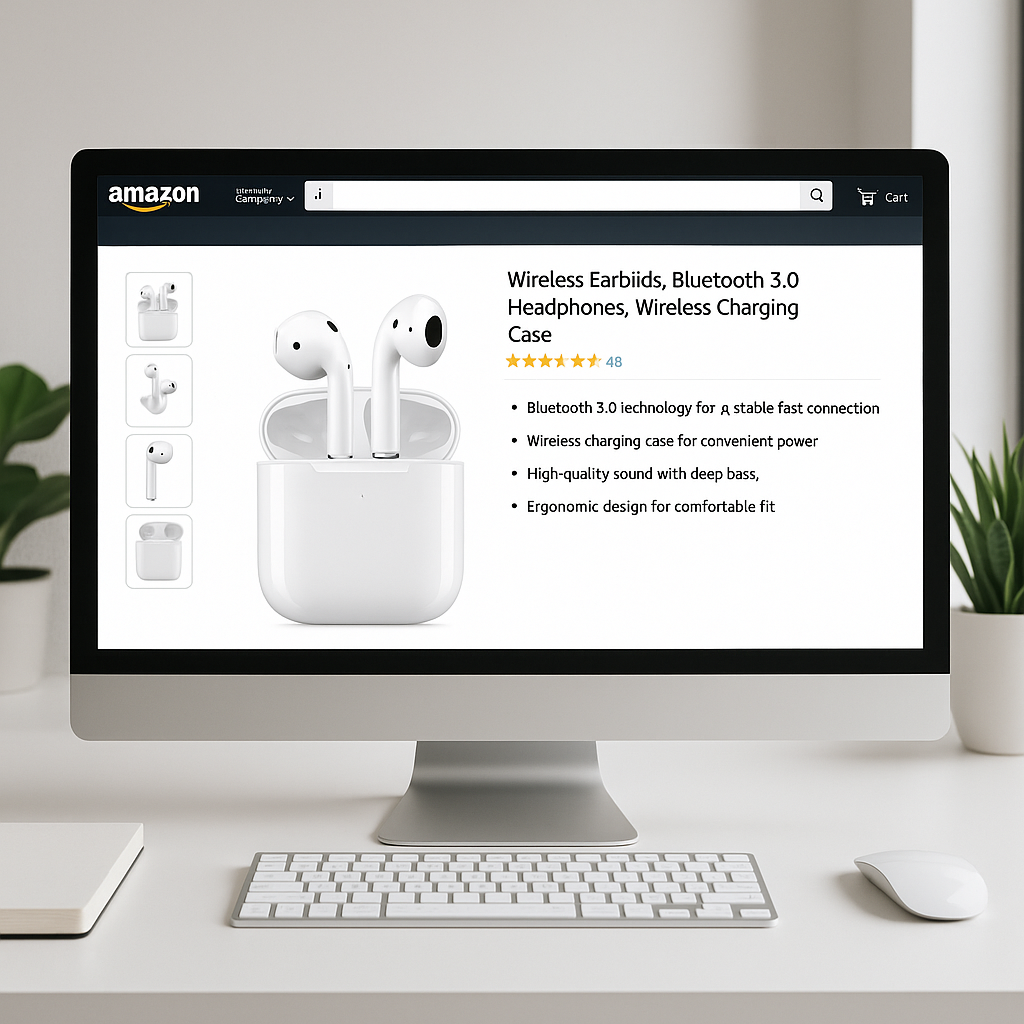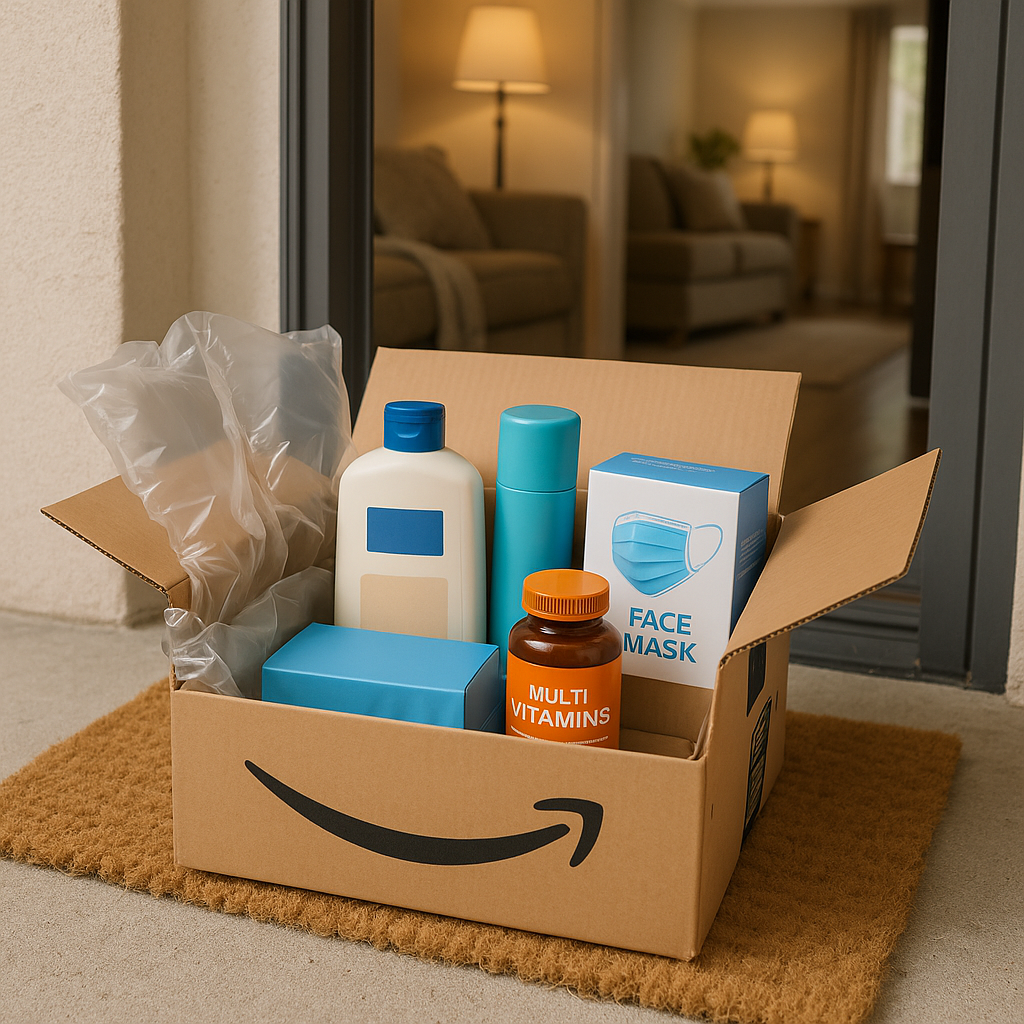7 Ways to Increase Your Amazon Sales This Year
In today’s highly competitive Amazon marketplace, simply listing products is no longer enough to guarantee success. With millions of sellers vying for customer attention, you need strategic approaches to stand out, boost conversions, and maintain your competitive edge. The good news is that with the right tactics, you can significantly improve your Amazon sales performance this year.
In this comprehensive guide, we’ll explore seven proven strategies to increase your Amazon sales. You’ll learn how to optimize product listings for better visibility, leverage advertising tools effectively, build a solid review foundation, implement smart pricing tactics, streamline fulfillment operations, utilize data analytics for informed decisions, and differentiate your offerings through personalization. Let’s dive into these actionable methods that can transform your Amazon business.
Optimize your product listings
Your product listings serve as the foundation of your Amazon success. Even with exceptional products, poorly optimized listings can severely limit visibility and conversions.
Start with your product titles. These should include your main keywords while remaining readable and compelling. The ideal formula typically includes your brand name, product type, key features, material, color, size, and quantity. For example, “BrandName Ergonomic Office Chair with Adjustable Lumbar Support, Breathable Mesh, Black, Standard Size” outperforms “Office Chair Black.”
For bullet points and descriptions, focus on benefits rather than just features. Instead of stating “5-inch memory foam,” explain how it “provides cloud-like comfort for all-night support.” Incorporate relevant keywords naturally throughout these sections without overstuffing.
Product images dramatically impact conversion rates. Include high-resolution photos (at least 1000×1000 pixels for zoom functionality) showing multiple angles, size context, lifestyle usage, and detailed feature close-ups.
Follow Amazon’s main image requirements strictly—pure white background with the product filling 85% of the frame.
Behind the scenes, optimize your backend search terms with alternative spellings, related terms, and common misspellings your customers might use. These invisible keywords help Amazon’s algorithm understand when to display your products.
Advanced listing optimization: A/B testing & A+ Content
For established sellers, Amazon’s “Manage Your Experiments” feature allows you to run A/B tests on titles, main images, and A+ Content to determine which versions drive more sales. Even small tweaks can yield significant improvements in click-through and conversion rates.
If you’re brand-registered, leverage A+ Content (formerly Enhanced Brand Content) to create immersive product stories with enhanced images, comparison charts, and rich text. Brands using A+ Content typically see 3-10% higher conversion rates by addressing customer questions and showcasing product benefits more effectively.
Regular keyword research remains essential. Use tools like Jungle Scout, Helium 10, or Amazon’s Brand Analytics (for brand-registered sellers) to discover high-volume, relevant search terms your competitors might be missing. Update your listings quarterly to reflect seasonal trends and evolving customer search behavior.
Leverage Amazon advertising and promotions
With organic visibility becoming increasingly challenging, strategic advertising has become essential for Amazon success. The platform offers several advertising options to increase your products’ exposure.
Sponsored Products ads are the cornerstone of most successful Amazon advertising strategies. These pay-per-click campaigns display your products in search results and on relevant product detail pages. Start with automatic targeting to gather data on which search terms convert best, then create manual campaigns focusing on your top-performing keywords. Set conservative daily budgets initially and monitor your Advertising Cost of Sale (ACoS) to ensure profitability.
Sponsored Brands (formerly Headline Search Ads) allow brand-registered sellers to showcase multiple products with a custom headline and logo, directing shoppers to your store or a custom landing page.
These ads appear prominently at the top of search results, making them excellent for brand awareness and new product launches.
Beyond advertising, promotional tools can significantly boost sales velocity. Amazon Coupons create eye-catching badges on your listings, increasing click-through rates. Lightning Deals, while requiring an additional fee, can drive substantial traffic during limited-time offers and help clear excess inventory.
The Brand Referral Bonus program rewards sellers who drive external traffic to their Amazon listings with an average 10% cashback on resulting sales. Consider combining social media marketing, email campaigns, or influencer partnerships with unique Amazon Attribution links to track performance and earn these bonuses.
Dynamic bidding strategies allow Amazon to automatically adjust your bid amounts based on the likelihood of conversion. For campaigns targeting your most profitable products, select “Up and Down” bidding to increase competitiveness for high-conversion opportunities while preserving your budget on less promising placements.
Earn and manage authentic reviews & ratings
Reviews serve as the social proof that builds trust with potential customers. Products with more positive reviews typically convert at significantly higher rates than those with few or negative reviews.
The most effective way to generate legitimate reviews is to provide exceptional products and customer service. Amazon’s “Request a Review” button allows you to send one standardized review request per order between 5-30 days after purchase. While you can’t customize these messages, their official nature often yields higher response rates than third-party email services.
For new product launches, Amazon offers programs to jump-start your review collection. Amazon Vine invites trusted reviewers to provide feedback on new products in exchange for free samples (provided by you). While this program involves fees, it generates high-quality, unbiased reviews from established reviewers.
Packaging inserts can subtly encourage reviews without violating Amazon’s terms of service. Rather than directly asking for positive reviews (which is prohibited), thank customers for their purchase and invite general feedback about their experience. Clear instructions on product use can also prevent negative reviews stemming from user error.
When you receive negative feedback, respond promptly and professionally. Offer solutions to resolve customer concerns, which demonstrates your commitment to satisfaction. In many cases, customers will update their reviews after positive resolution experiences. For particularly problematic reviews that violate Amazon’s guidelines, you can request removal through Seller Central, though this should be reserved for clear violations rather than simply unfavorable opinions.
Set a competitive and strategic pricing strategy
Your pricing strategy directly impacts both your Buy Box win rate and overall sales velocity. Finding the optimal balance between profitability and competitiveness requires continuous monitoring and adjustment.
The Buy Box—Amazon’s “Add to Cart” button that accounts for over 80% of sales—considers price as a primary factor in determining which seller wins this coveted position. While being the absolute lowest price isn’t necessary, staying within a competitive range is crucial, especially for products with multiple sellers.
Manual price monitoring becomes unsustainable as your catalog grows. Amazon’s own Automate Pricing tool offers basic repricing functionality, automatically adjusting your prices based on rules you establish. For more sophisticated control, third-party repricing tools like Informed.co, RepricerExpress, or Seller Snap provide advanced algorithms that can optimize for profitability rather than simply matching competitors.
When setting minimum and maximum price thresholds for automated systems, carefully calculate your true costs including Amazon fees, shipping, storage, advertising, and product costs. Your minimum should protect your profit margin, while your maximum prevents pricing errors that could damage your reputation.
Strategic temporary price reductions can boost sales rank, which improves organic visibility even after returning to standard pricing. Consider planning these around major shopping events or to coincide with external marketing efforts.
For products where you’re the only seller (particularly your own private label items), dynamic pricing based on demand patterns rather than competition can maximize profits. Higher prices during peak demand periods and slight reductions during slower times can optimize your overall revenue without constant undercutting.
Enhance fulfillment, shipping, and inventory management
Efficient fulfillment operations directly impact your sales through improved Buy Box eligibility, customer satisfaction, and inventory availability. Stockouts not only represent lost sales opportunities but also damage your product ranking and seller metrics.
Fulfillment by Amazon (FBA) remains the gold standard for most sellers, providing Prime eligibility and handling storage, packing, shipping, and customer service.
The Prime badge significantly increases conversion rates, with Prime members spending substantially more than non-Prime customers. While FBA fees have increased, the visibility and conversion advantages often outweigh the costs for most products.
For sellers maintaining their own fulfillment (FBM), achieving Seller-Fulfilled Prime status offers Prime benefits without FBA costs, though the stringent delivery requirements make this viable only for operations with excellent logistics infrastructure. Regular FBM works best for oversized items, products with special handling requirements, or very low-margin goods where FBA fees would eliminate profitability.
Regardless of fulfillment method, proper inventory management prevents both stockouts and excess storage fees. Amazon’s Restock Inventory tool provides basic guidance on reorder timing based on historical sales data. For more complex operations, dedicated inventory management solutions like InventoryLab or Forecastly offer predictive analytics to anticipate seasonal fluctuations and sales trends.
Multi-channel sellers should implement integrated inventory systems that adjust available quantities across platforms in real-time. This prevents overselling when a product sells out on one marketplace but remains listed on others. Solutions like Sellbrite or ChannelAdvisor synchronize inventory across Amazon, eBay, Walmart, and your own website.
During peak seasons like Q4, consider increasing your standard inventory levels by 30-50% to accommodate higher sales volume. The cost of additional storage is typically far less than the potential lost revenue from stockouts during high-demand periods.
Use analytics & data-driven adjustments
Success on Amazon increasingly depends on your ability to collect, interpret, and act on performance data. Guesswork and intuition must give way to evidence-based decision making.
Amazon Seller Central provides essential business reports tracking unit session percentage (conversion rate), page views, Buy Box percentage, and detailed sales data. Review these metrics weekly at minimum, looking for patterns or sudden changes that might indicate problems or opportunities. For example, a drop in conversion rate with stable traffic could signal competitive pricing issues or negative reviews.
Beyond basic reports, Amazon Brand Analytics (available to brand-registered sellers) offers valuable insights into search term performance, item comparison analytics, and demographic information. Understanding which search terms drive actual purchases rather than just clicks allows you to refine both your organic keywords and advertising targets.
Implement A/B testing methodologies for continuous improvement. Test one variable at a time—whether it’s a title format, main image, price point, or bullet point structure—and give each test sufficient time to generate statistically significant data before making permanent changes.
Use your advertising campaign reports to inform your organic listing optimization. Terms that convert well in paid campaigns typically perform similarly in organic search. Meanwhile, poor performers may indicate keyword relevance issues that should be addressed in your listing content.
Consider supplementing Amazon’s native analytics with third-party tools like Helium 10’s Market Tracker or Jungle Scout’s Opportunity Finder to identify emerging product trends and competitive gaps. These insights can guide inventory expansion decisions and reveal untapped customer needs within your niche.
Stand out with personalization & unique offers
In categories saturated with similar products, personalization and customization provide powerful differentiation opportunities that can command premium pricing and foster customer loyalty.
Amazon Custom allows sellers to offer personalized products directly through the marketplace.
Customers can add text, upload images, or select customization options before purchasing. This program works particularly well for gifts, promotional products, and home décor items. The setup requires additional configuration in Seller Central but can transform commodity products into unique offerings with higher margins.
For artisans and crafters, Amazon Handmade provides a dedicated shopping experience for unique, handcrafted items. While the application process is selective, accepted sellers benefit from reduced fees and a customer base specifically seeking distinctive, non-mass-produced goods.
Print-on-demand (POD) integration offers a low-risk approach to product customization. Services like Merch by Amazon and Printful allow you to upload designs that are printed only when ordered, eliminating inventory risk while offering endless design variations. This model works exceptionally well for apparel, mugs, phone cases, and home décor items.
Strategic bundling creates unique offerings from standard products. By combining complementary items into convenient packages, you differentiate your listings while increasing average order value. For example, rather than selling a yoga mat alone, create a bundle with alignment blocks, a strap, and a carrying case. Ensure your main image clearly shows all included items to communicate value effectively.
Seasonal personalization drives sales during peak shopping periods. Having Valentine’s Day, Mother’s Day, graduation, and holiday-themed customization options ready ahead of these occasions can capture shoppers seeking meaningful gifts. Plan your personalized offerings calendar annually to ensure adequate preparation time for design, listing creation, and inventory planning.
Frequently asked questions (FAQ’s)
How do I increase my sales on Amazon fast?
Focus on optimizing listings with relevant keywords, running Amazon Ads, and ensuring your prices and shipping options are competitive to win the Buy Box.
What is the most important factor for improving Amazon sales?
The top factors are product listing optimization (SEO and images), competitive pricing, and earning positive, authentic reviews.
How can I get more reviews on Amazon?
Deliver exceptional service, use the official “Request a Review” button, and enroll new products in Amazon Vine or the Early Reviewer Program.
Does advertising on Amazon really improve sales?
Yes. Sponsored Products and Brands increase product visibility, leading to higher conversions and improved organic ranking.
What’s the easiest way to automate inventory on Amazon?
Use automated inventory tools, integrate with FBA, and regularly monitor your Seller Central business reports to avoid stockouts.
